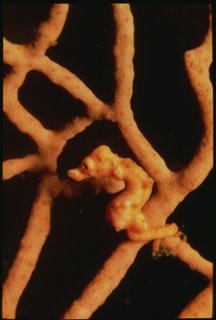THE LANGUAGE OF COLOUR
 The Colour of Memory (Photo: John May)
The Colour of Memory (Photo: John May)Two linguists – Paul Kay and Brent Berlin – began studying the language of colour when they were comparing their field notes in the early 1960s. Kay had just returned from
Intrigued, Kay and
The variation in the number of colour words, Kay believes, is due to the fact that hunter-gatherers need fewer colour words because colour data rarely provides crucial information about a natural object or scene. The number of colour words in a society corresponds to its degree of industrialisation.
The publication of their book Basic Colour Terms (1969), which suggests that people everywhere see colour in quite similar ways, triggered off years of speculation as to whether the patterns they had discovered had a common neurophysiological basis but, according to Kay (2004) ‘there is no physiological evidence for or against this view.’
Source: Philip E. Ross, 'Draining the Language of Colour (Scientific Smerican. April 2004. p24)







